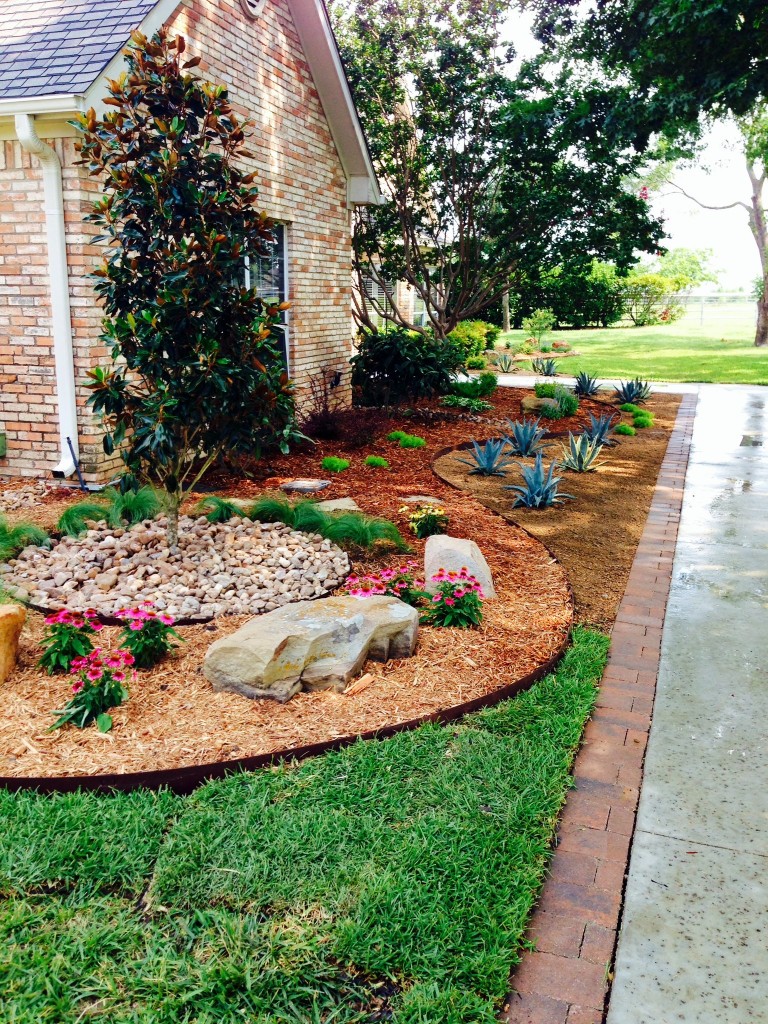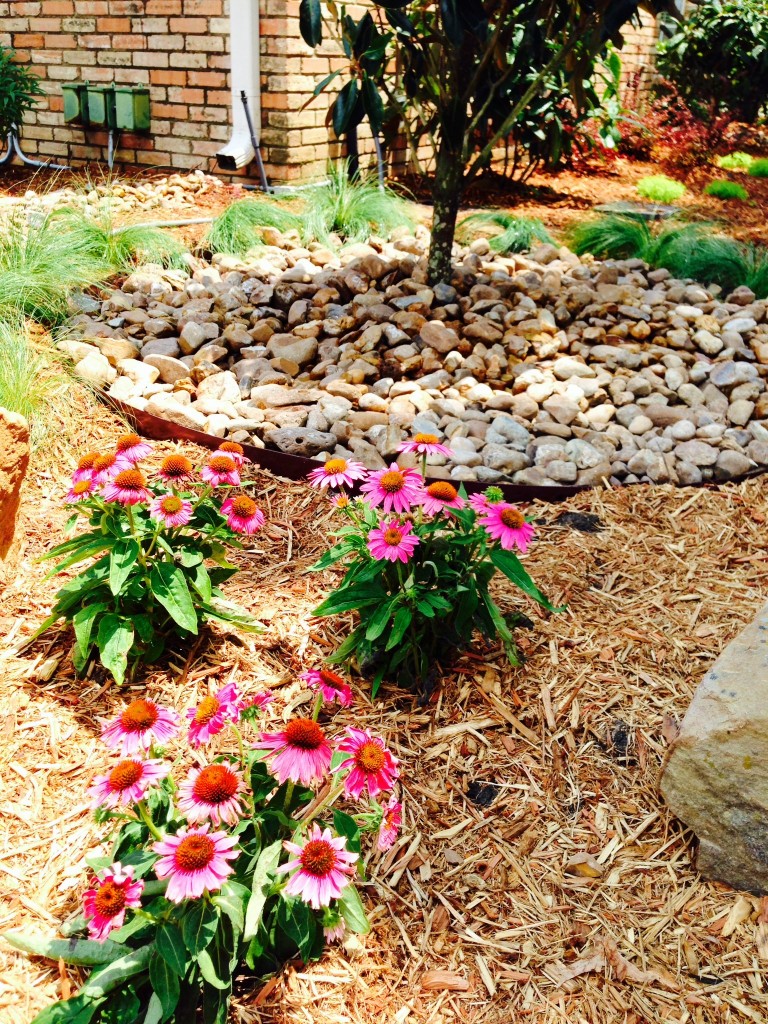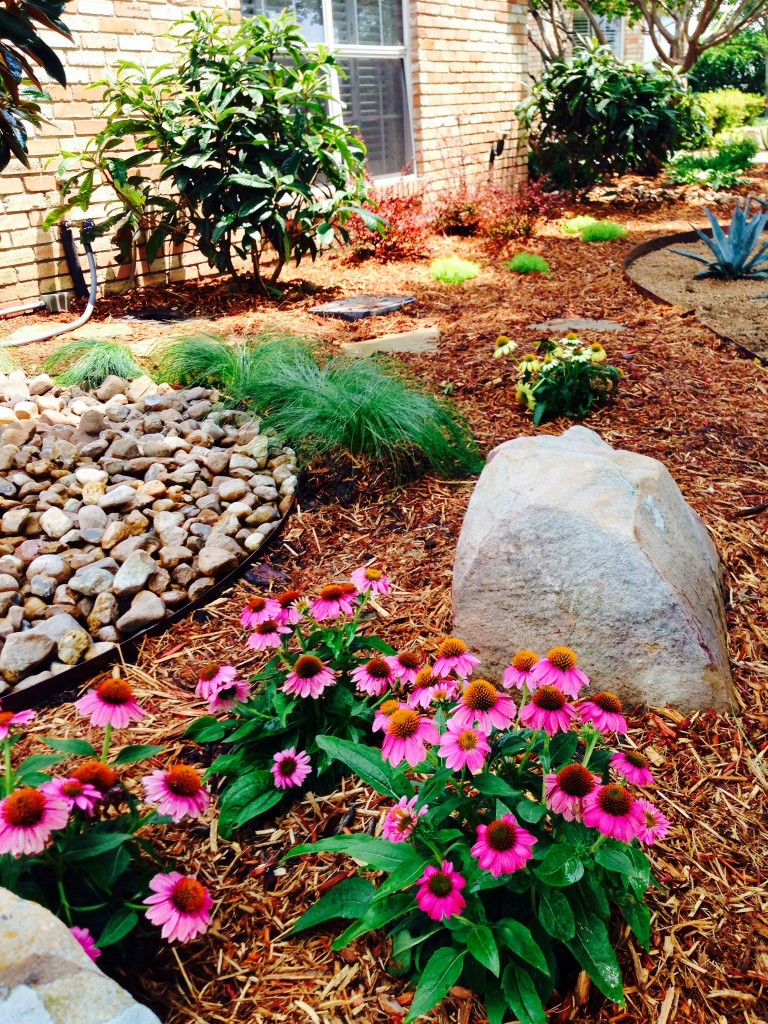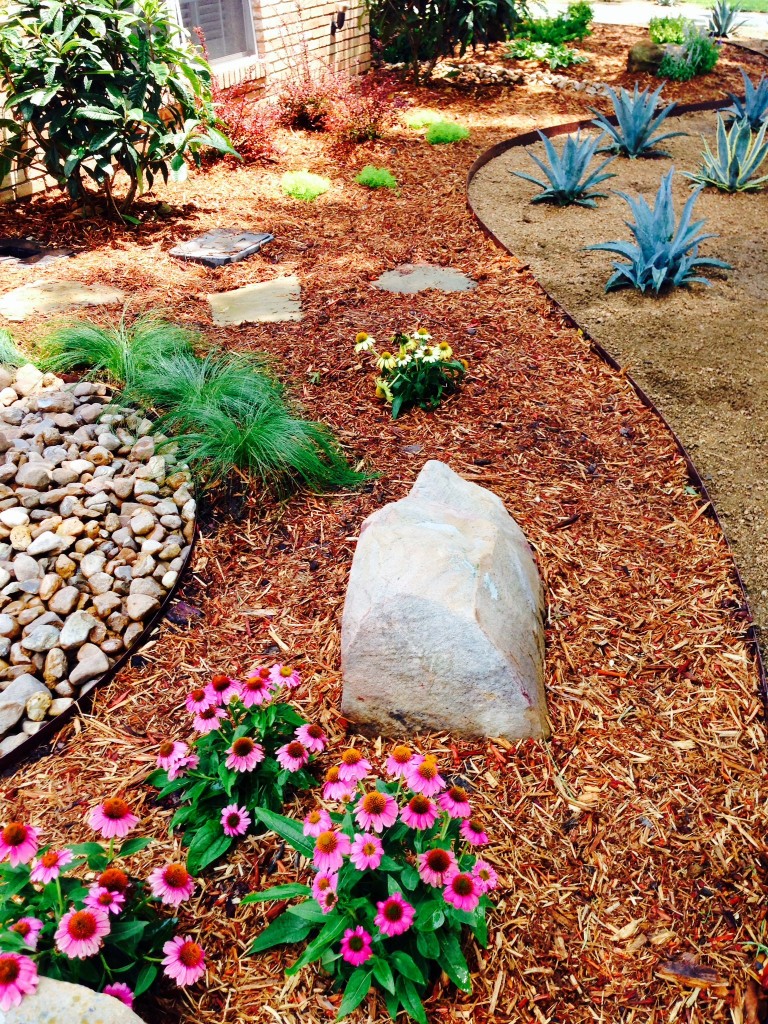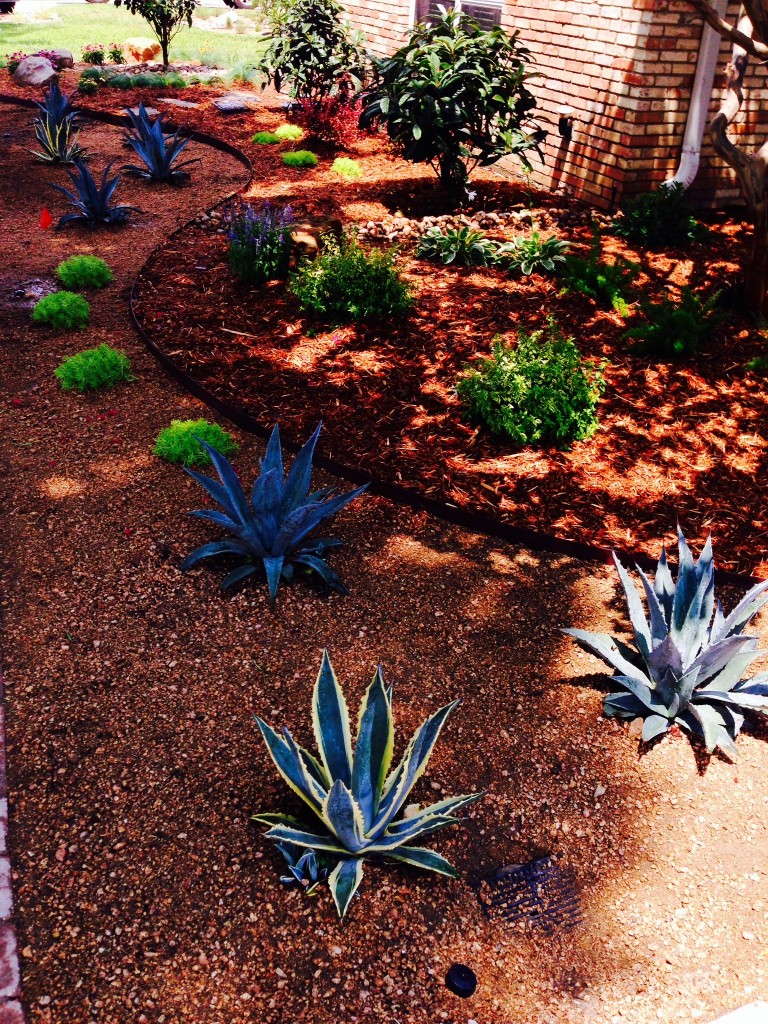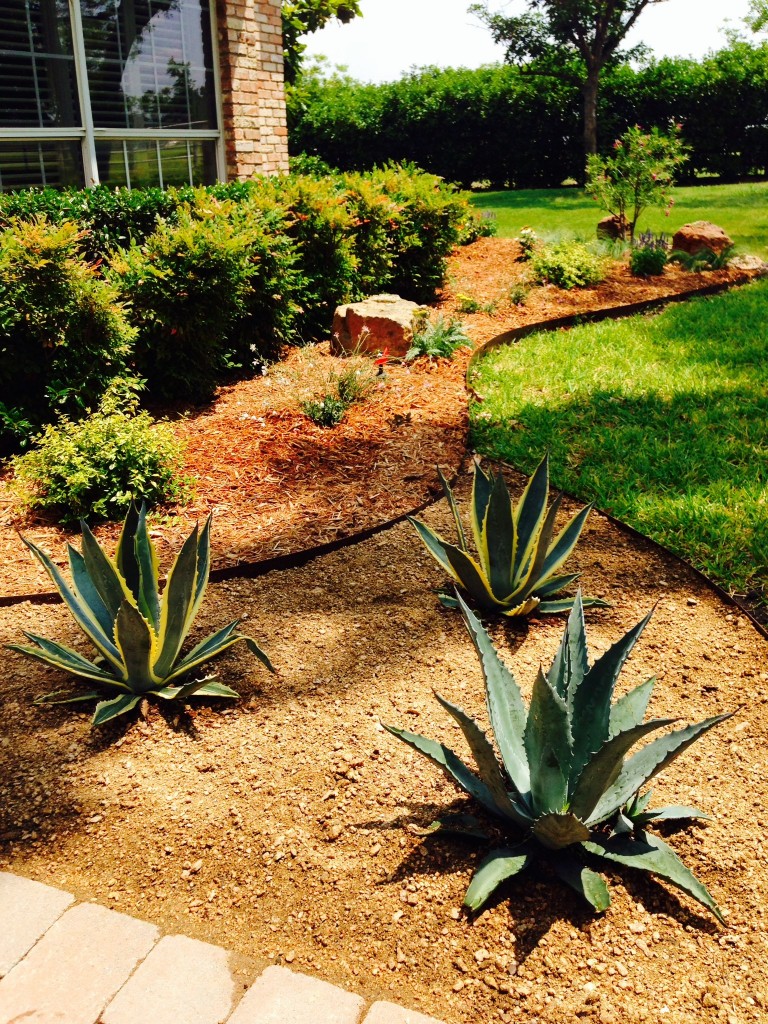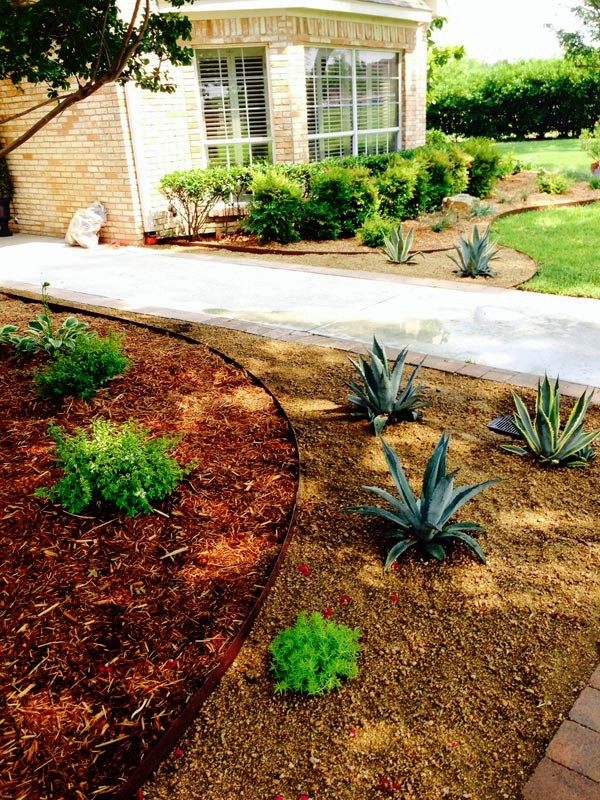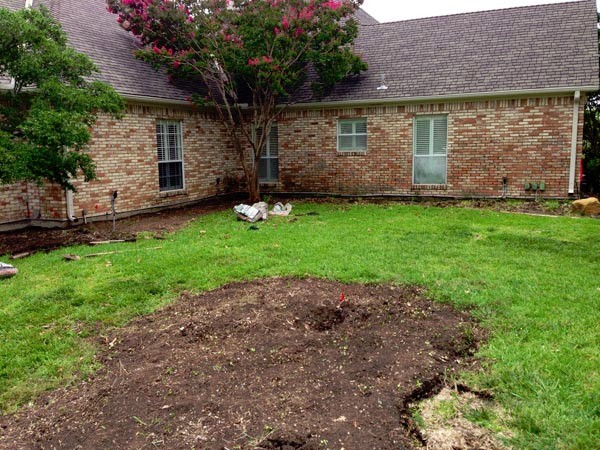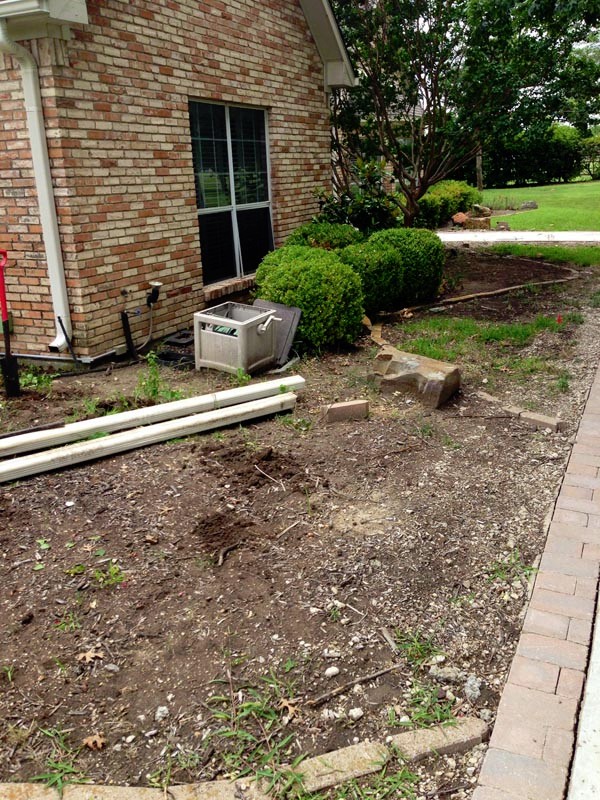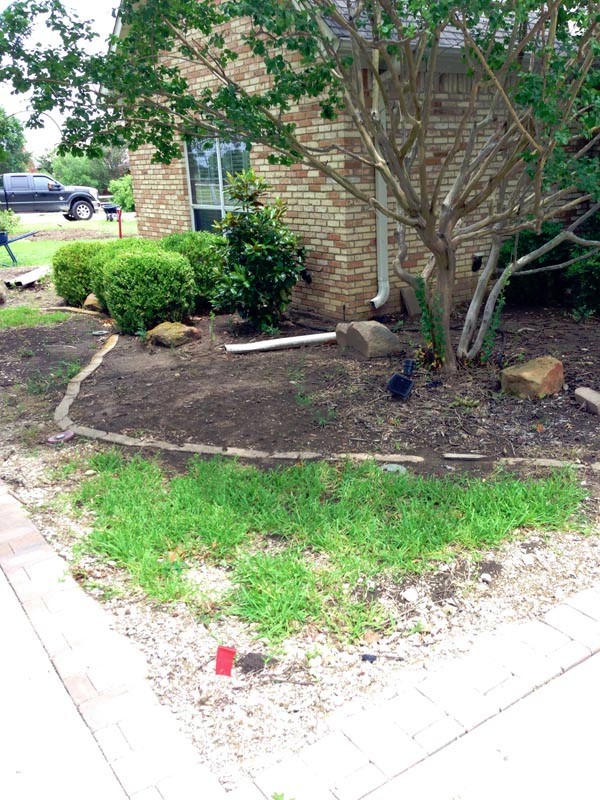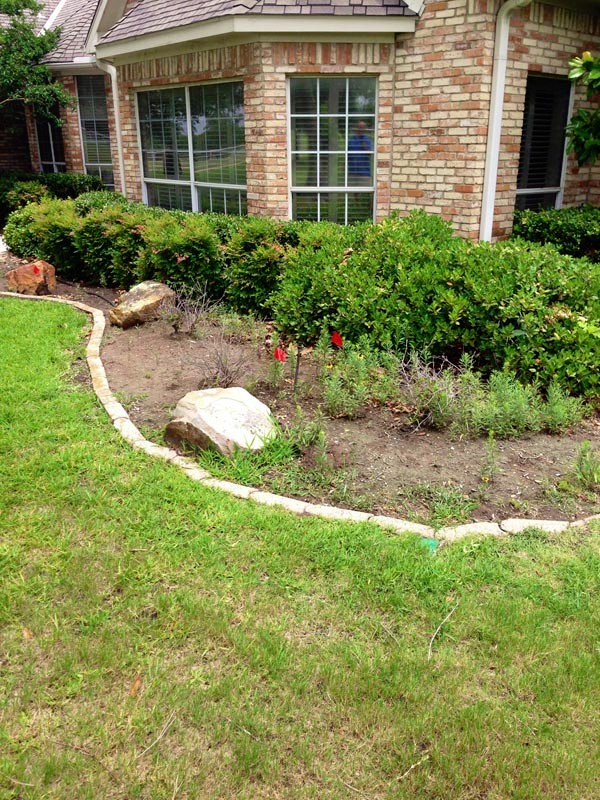Swamped with yard work? Turn off your sprinklers and try Xeriscaping
Just about everything’s big in Texas. But when it comes to water, well, there’s little to speak of. So how do some Dallas area homeowners reconcile their desire for vast green yards with a shortage of H2O? The answer is a Xeriscape — a very big word indeed.
Derived from the Greek word xeros, meaning dry, xeriscaping is a form of landscaping that’s miserly with water. And while it may conjure up images of tumbleweed landscapes devoid of greenery save the occasional cactus, you can bet your 10-gallon hat that a xeriscaped yard can be as beautiful and lush as any other type of landscape.
Xeriscaping fundamentals include using native and adaptive plants, creating efficient irrigation systems, improving soil quality, and mulching. In places like central Texas, where droughts are so bad you can get fined up to $5,000 for overwatering, residents who xeriscape may reduce the amount of water used for yard work by as much as 60 percent. And xeriscaped yards require less work overall — a big draw for those who have endured unbearably hot summers trying to revive a once-plush blanket of Bermuda grass turned burnt brown.
Completed Landscaping Project in Xeriscape Design
“Mow grass and drag water hoses — that’s what I did all summer,” says Dave Watson, a retired electrician in Dallas, Texas, and a client of mine recalling the upkeep needed for his old yard. Fed up with the hassle, Watson turned to xeriscape 11 years ago. Today he grows wildflowers and buffalo grass, a native prairie grass that can be left to grow naturally (it reaches a maximum height of 6 to 8 inches) and is drought- and cold- tolerant. For Watson, it was a cure for the summertime blues: “I love it. There’s no watering and fertilizing. A couple of times a year, I’ll mow. Other than that, I do nothing to take care of it.”
Today more than 40 states have xeriscape projects, and because a xeriscape project is based on climate, there is great variation: An upstate New York yard teeming with bee balms, sunflowers, tulips, daffodils, grape hyacinths, snowdrops, and daylilies, for example, contrasts sharply with the irises, cornflowers, yarrows, California poppies, and catch flies that thrive in Reno, Nevada. Obviously, a place doesn’t have to be parched to benefit from xeriscaping. Most North American landscapes are a disaster ecologically, the whole public has been trained to over water and over fertilize.
Finding what grows well in your yard is key to an effective xeriscape. One rule of the green thumb: Choose plants that are native to within a 50-mile radius of your home. Native plant societies, water districts, and university extension departments often keep such lists. Many cities also have xeriscape demonstration gardens. Absolutely Bushed Landscaping has had the opportunity to speak at local town libraries. We are also open for more opportunities to do more in the future.
Another trick to a successful xeriscape is grouping together plants with similar water needs. For instance, you wouldn’t put thirsty roses next to cacti — the water required for one would be wasted on the other (not to mention they’d have nothing to talk about!). Xeriscaping also allows for an “oasis zone,” where gardeners grow a few prized water-guzzling plants. The oasis zone is often located in the front of a home where these plants can be easily watered and admired.
So, is this nation of nozzle junkies ready to dive into xeriscaping? “Most people aren’t going to take the plunge,” says Watson. “Perhaps if they would try a small section of the yard first, I feel 90 percent of them would be convinced.”
Our Starting Point for this water-wise landscaping project.
Plants used for a Xeriscape design should be selected for their low water requirements, adaptability to the region’s soil and climate, and visual appeal. South/Central Texas is blessed with an abundance of beautiful native plants. Most have lower water demands, fewer pest problems, and lower fertilizer needs than many exotic plants brought into the area.
Through the efforts of local nurserymen, native Texas plants are readily available in area nurseries and garden centers. Xeriscaping uses many of these native plants; plus many well-adapted exotic plants that also have lower water demands. Sounds like it’s time to get our feet wet!
If you are interested in switching your landscape over to xeriscape. Contact us today, our team of landscape designers is just a phone call away.
